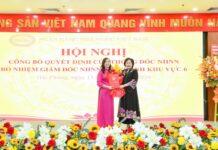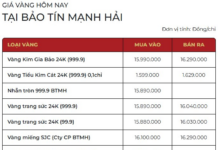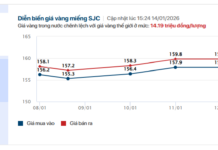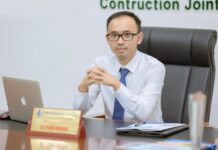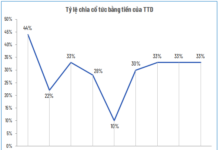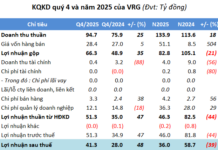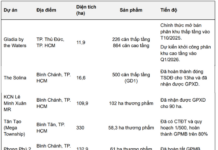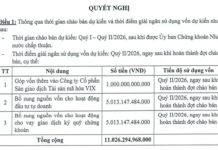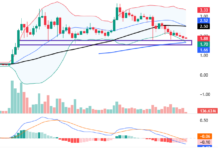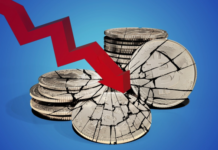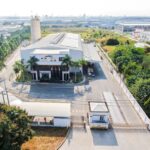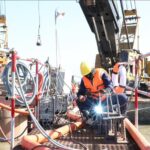On the afternoon of August 26, 2024, the Minister of Agriculture and Rural Development, Le Minh Hoan, hosted a meeting with the National Assembly delegation of 12 provinces and cities belonging to the “Project for Sustainable Development of 1 million ha of high-quality and low-emission rice specialized cultivation associated with green growth in the Mekong Delta by 2030.”
AIMING TO INCREASE THE VALUE OF THE RICE INDUSTRY BY AN ADDITIONAL $840 MILLION/YEAR
Mr. Nguyen Do Anh Tuan, Director of the International Cooperation Department of the Ministry of Agriculture and Rural Development, said that the Project for Sustainable Development of 1 million ha of high-quality rice, approved by the Prime Minister in late 2023, would be a revolution in rice production if successfully implemented. The project will implement many synchronous tasks, including infrastructure, cultivation methods, mechanization, etc. In addition, it will also reorganize production and strengthen connections between farmers, cooperatives, businesses, and traders to reduce risks related to prices and markets.
“This is the largest large-scale rice production program with reduced emissions in the world so far. Many countries have expressed their interest and want to learn from Vietnam,” said Mr. Tuan.
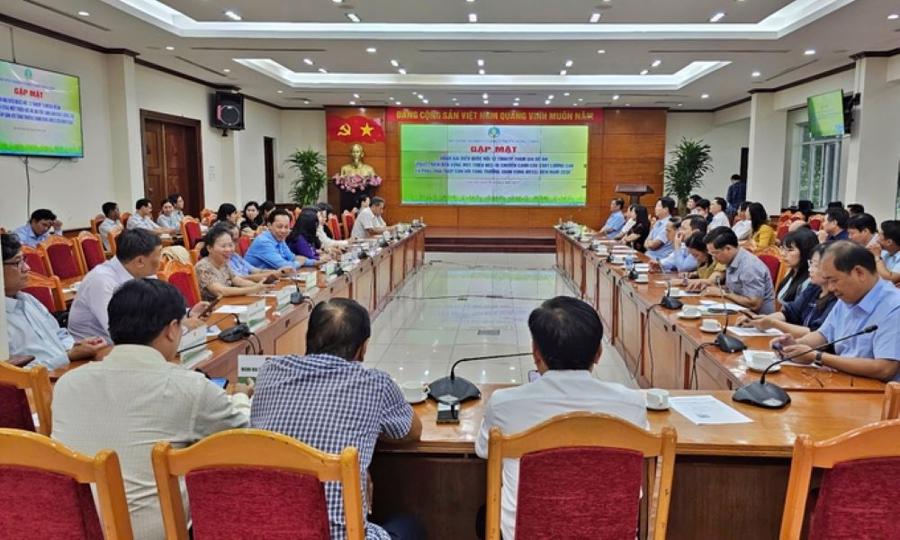
Currently, the Ministry of Agriculture and Rural Development has coordinated with relevant agencies to develop seven pilot models through three consecutive rice crops in Can Tho, Tra Vinh, Soc Trang, Kien Giang, and Dong Thap. Among these, a 50-ha model implemented at Tien Thuan Cooperative in Vinh Thanh District, Can Tho City, showed that farmers reduced the amount of rice seeds from 140 kg to 60 kg/ha, decreased the number of fertilizer applications from 3-4 times to 2 times per crop, reduced at least 20% of inorganic fertilizer, and experienced less lodging, reduced diseases, and post-harvest losses… Reducing the amount of rice seeds to 60 kg/ha saved seed costs by VND 1.2 million, and fertilizer costs were reduced by VND 0.7 million, with a yield of 6.3-6.5 tons per ha compared to 5.8-6.1 tons per ha in traditional practices.
“The reason why fundraising for this project is difficult is that projects with a scale of less than $100 million are challenging to attract sponsors. In addition, if the preparation time for the project exceeds 12 months, funders will also be hesitant to invest. Furthermore, when it comes to disbursement at the local level, it is necessary to pay attention to the Law on State Budget and the Law on Public Investment.”
Mr. Nguyen Do Anh Tuan, Director of the International Cooperation Department, Ministry of Agriculture and Rural Development.
Based on the accumulated experience, the Ministry will issue a handbook, clearly indicating the technical advances to be applied. According to Mr. Tuan, the program’s goal by 2025 is to have 12 provinces and cities in the Mekong Delta region cultivate 180,000 ha of low-emission rice and pilot carbon credits for the region to meet standards. By 2030, the region will expand an additional 820,000 ha of low-carbon emission rice. The program also aims to reduce input costs by 30%, contributing to a 20% reduction in rice production costs for farming households, a 50% increase in profit margins for rice farmers, and a 10% reduction in greenhouse gas emissions.
According to estimates, the project will create a new value equivalent to about VND 21,000 billion/year, or about $840 million/year. This figure includes reduced production costs (VND 9,500 billion), increased product selling prices (VND 7,000 billion), carbon credit sales (about VND 2,500 billion), and waste utilization (VND 2,000 billion). In addition, income for the people is expected to increase by 40%, and 1 million jobs for farmers in the project area will be secured, contributing to enhancing Vietnam’s image internationally.
Mr. Nguyen Do Anh Tuan pointed out that the most significant difficulty of the project is fundraising, requiring about $3 billion. This amount will be spent on infrastructure, irrigation, and improving skills and providing technical assistance to localities. It is expected that 60% will come from socialized capital, and the remaining $1.2 billion will be mobilized from international organizations such as the World Bank and ADB.
RESTRUCTURING THE ENTIRE RICE INDUSTRY
Mr. Thach Phuoc Binh, Vice Chairman of the Delegation of the National Assembly of Tra Vinh Province, expressed concern about the planning and infrastructure development for rice cultivation in the Mekong Delta, which is not yet synchronized, and irrigation, transportation, and warehouses are not well connected. Regarding human resources, local agricultural experts are weak and insufficient in terms of qualifications and quantity. “People also lack and are limited in technology, knowledge, and understanding of the market. Therefore, there will be barriers to transferring technical advances to achieve the goal of reducing emissions,” said Mr. Binh.
Mr. Binh also suggested that the specialized agencies of the Ministry of Agriculture and Rural Development should conduct additional environmental impact assessments, as the Mekong Delta is a region very sensitive to climate change.
Ms. Ha Thi Nga, President of the Vietnam Women’s Union and a member of the National Assembly delegation of Dong Thap Province, shared: “The dual goal of the Project is to help farmers reduce greenhouse gas emissions. If practiced correctly, farmers can also earn additional income from carbon credits. This will not only increase farmers’ incomes but also give Vietnamese rice priority when exported to world markets. The successful implementation of this Project will help enhance the prestige of Vietnamese rice.”
Ms. Nga said that voters eagerly await the widespread implementation of the Project to contribute to improving the lives of rice farmers and the environment.
“Currently, many union members leave rural areas to work in industrial zones because agricultural incomes are too low. I believe that this Project will be a ‘lifeline’ for farmers in the Mekong Delta, who are diligent, hardworking, and resilient… They will be able to capitalize on their strengths and ‘live well’ from rice cultivation,” Ms. Nga expressed.
Some other delegates suggested that in addition to the determination of the entire political system, the Project must change the people’s awareness. Assessments of risks, economic benefits, and the sustainability of the Project also need to be discussed in more detail.
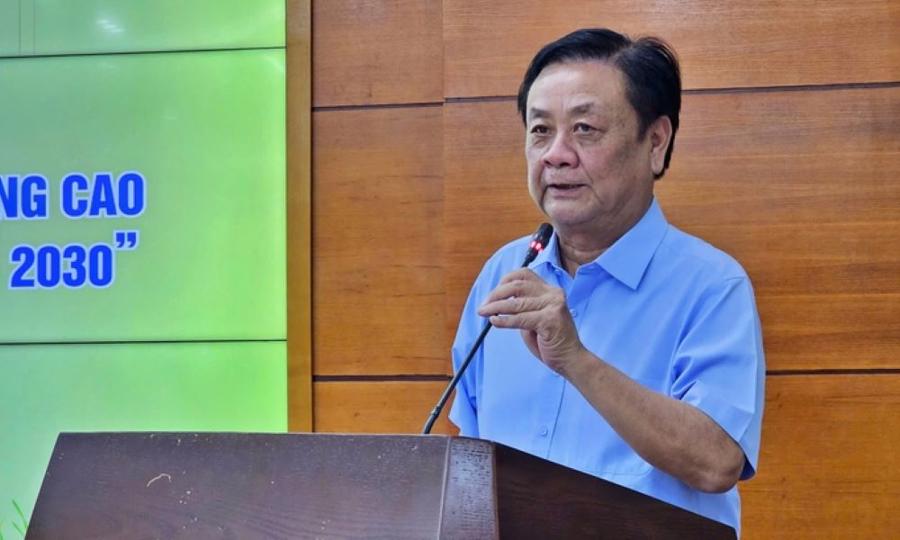
Listening to the opinions, Minister Le Minh Hoan emphasized that the goal of 1 million ha of high-quality rice is not just confined to the economic realm. Through practical activities, the Project hopes to restructure the ecosystem of the entire industry, including the cultivation methods of the people, the system of traders, and the organization of linkages in cooperatives… Associating reduced emissions with green growth is just one of the Project’s goals. This is not just a technical project to reduce production costs but also an opportunity to reassess the production capacity of the key agricultural region of the Mekong Delta from the perspective of the rice industry.
“One million ha of high-quality rice is not the path we have been taking. If localities do not consider this a revolution, it cannot succeed. The Ministry of Agriculture and Rural Development cannot reach every farmer and convince them to change their mindset and cultivation habits.”
Mr. Le Minh Hoan, Minister of Agriculture and Rural Development.
In response to the National Assembly Deputy’s question about why the Project was not separated into 12 individual projects for each locality, Minister Le Minh Hoan explained that the reason is that the Project has a large proportion of investment in infrastructure, transportation, and irrigation, and there needs to be a unified management to avoid conflicts between regions.
“The people’s thinking is mainly seasonal, while businesses and traders think in terms of trade. These two perspectives are not yet fully aligned. The Ministry of Agriculture and Rural Development and the Ministry of Industry and Trade have proposed to the Government to include ‘traders’ in the rice industry system. For the rice industry to be sustainable, it must have an ecosystem with the participation of all parties: farmers, traders, businesses, and the State,” emphasized Minister Le Minh Hoan.
Vietnam ready to welcome record international visitors
In January of this year, Vietnam welcomed over 1.5 million international visitors, the highest number since the country reopened its tourism in March 2022.
Urgent Momentum on the Construction Site of the Hau River Bridge
In the scorching heat and gusty wind of the southwestern region in the days leading up to the 2024 Lunar New Year, there is a bustling construction site not far from the beach. Over 300 dedicated workers and staff are diligently working on the construction of the Dai Ngai Bridge, which will soon connect the two banks of the Hau River.








